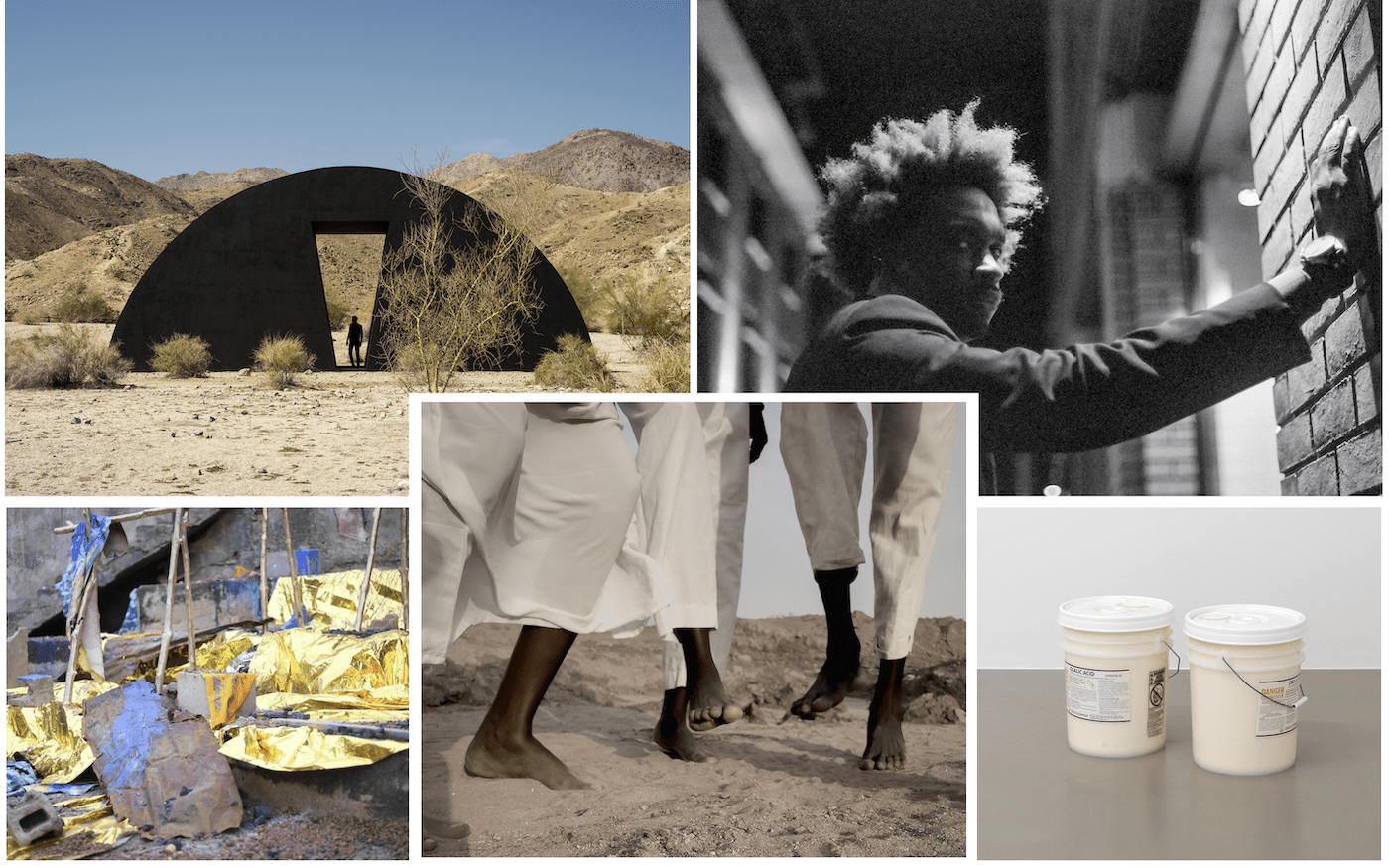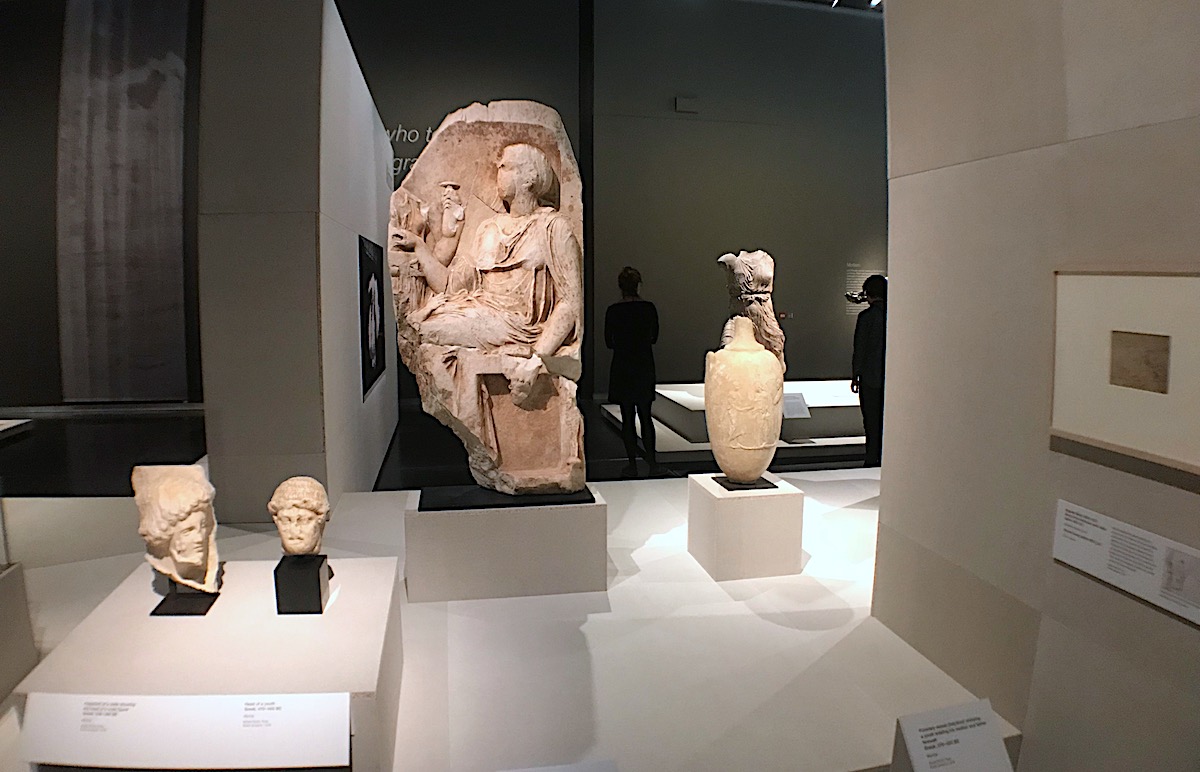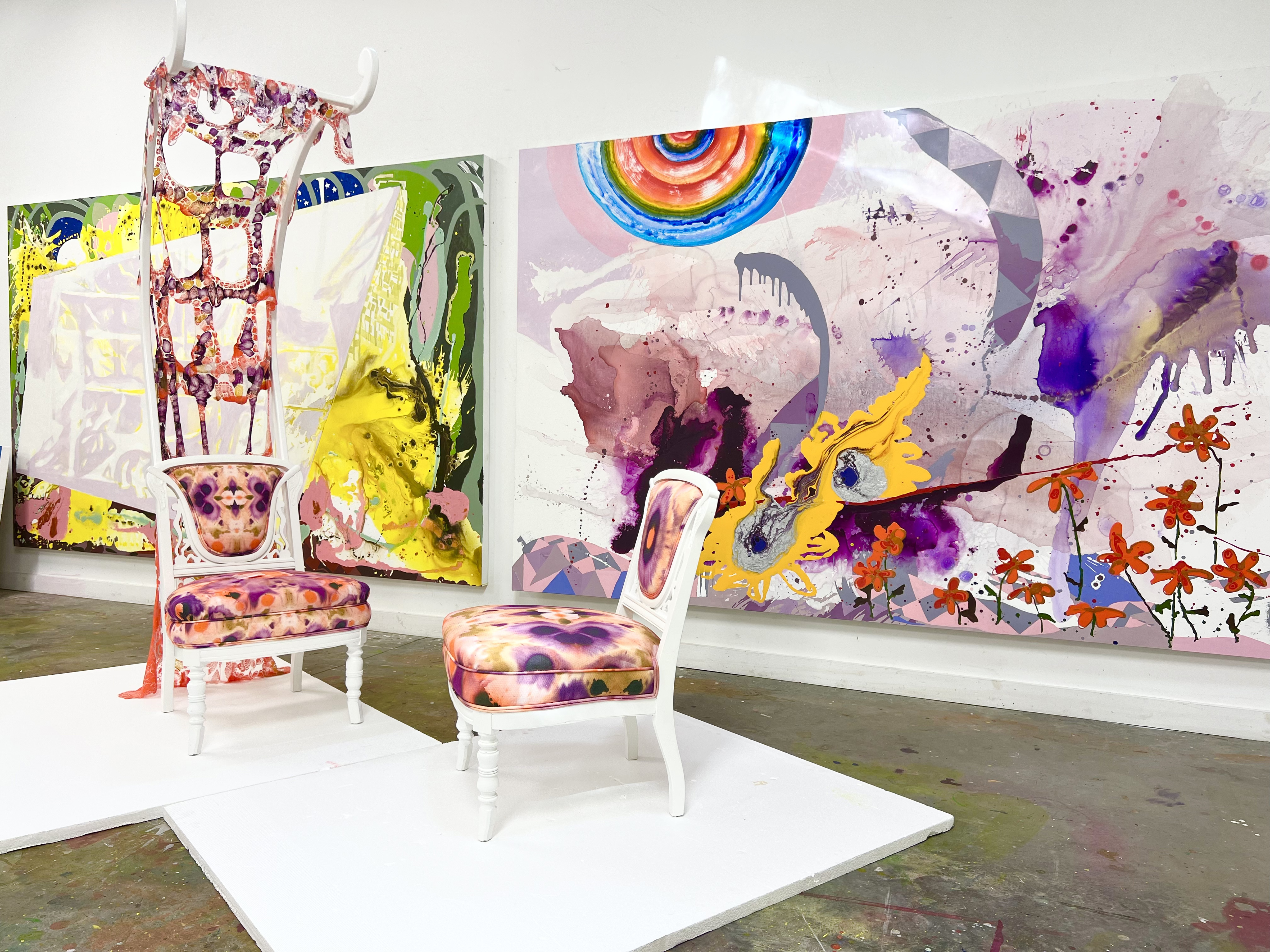Untitled
2016 - Drawing & Print (Drawing & Print)
27.94 x 21.59 cm
James "Yaya" Hough
This untitled ink and pencil drawing by James “Yaya” Hough is made on what the artist calls “institutional paper”, or the state-issued forms that monitor the daily activities of prisoners, of which, each detainee is generally required to fill out in triplicate. The form used for this drawing is a request for medical attention. This work illustrates an assembly-line of severed bodies being pumped full of feet and other body parts. Features several recurring motifs for the artist, black holes with protruding hands seem to fall endlessly into the page, while the faceless figures are stuffed and reassembled. The power of this artwork is two-fold. Firstly, it appropriates and documents the system’s formal processes of control. But is also addresses the artist’s reflections on this method of terror, often through surrealistic, if not nightmarish, imagery in which bodies are sliced, tethered, dominated, and treated like fodder for the machine. To illustrate this relation, the works are framed in such a fashion so that the recto and verso of each document is visible.
Working in ballpoint pen, pencil, and watercolor, often on the backs of bureaucratic prison forms, James “Yaya” Hough’s work conveys the burdens of incarcerated life, revealing not only the brutal reach of the carceral system, but laying bare its affects. Sentenced to life without parole in 1992, Hough went to prison at age 17; after 27 years, the Supreme Court of the United States ruled that such sentences for juveniles is unconstitutional, and Hough was released. The artist, both independently, and as a member of a network of other artists who share a similar history, is one of the key voices working at the intersection of art and the criminal justice system today.
Colors:
Related works sharing similar palette

© » CONTEMPORARYAND
C& Magazine’s Highlights of 2023 You Might Want to Read Again | Contemporary And search for something search C& AMÉRICA LATINA EN FR MEMBERSHIP EN FR Editorial All Editorial Features Installation Views Inside the Library Interviews News Opinions Events All Events Art Fairs Conferences Exhibitions Festivals Performances Screenings Talks / Workshops C& Projects C& Artists’ Editions C& Commissions C& Center of Unfinished Business Show me your shelves! C& Education Mentoring Program Critical Writing Workshops Lectures / Seminars Membership Opportunities Print C& Audio Archive On Tour Places Explore IN CONVERSATION INSTALLATION VIEW WE GOT ISSUES DETOX LABORATORY OF SOLIDARITY CONSCIOUS CODES CURRICULUM OF CONNECTIONS LOVE ACTUALLY OVER THE RADAR BLACK CULTURES MATTER INSIDE THE LIBRARY LOOKING BACK Follow About Contact Newsletter Advertise Imprint Data protection Membership Contemporary And (C&) is funded by: Editorial All Editorial Features Installation Views Inside the Library Interviews News Opinions Events All Events Art Fairs Conferences Exhibitions Festivals Performances Screenings Talks / Workshops C& Projects C& Artists’ Editions C& Commissions C& Center of Unfinished Business Show me your shelves! C& Education Mentoring Program Critical Writing Workshops Lectures / Seminars Membership Opportunities Print C& Audio Archive On Tour Places Explore IN CONVERSATION INSTALLATION VIEW WE GOT ISSUES DETOX LABORATORY OF SOLIDARITY CONSCIOUS CODES CURRICULUM OF CONNECTIONS LOVE ACTUALLY OVER THE RADAR BLACK CULTURES MATTER INSIDE THE LIBRARY LOOKING BACK GO TO C& AMÉRICA LATINA About Contact Newsletter Advertise Imprint Data protection Membership Best of 2023 C& Magazine’s Highlights of 2023 You Might Want to Read Again From climate colonialism to new perspectives from queer artists in Mozambique, these are some of our most-read articles this year...

© » KADIST
Fernanda Gomes
2013For this floor based work, Gomes has taken two lengths of bamboo and tied them together using linen thread...

© » KADIST
Robert Zhao Renhui
2014Created during Zhao Renhui’s residency at Kadist SF in 2014, Zhao Renhui began observing and cataloguing insects inspired by the scientific impulse towards exhaustive taxonomy of Sacramento-based Dr...

© » ARTS EQUATOR
Theatre Podcast: "Tiger of Malaya", Teater Ekamatra Thinking and Talking about Arts and Culture in Southeast Asia ArtsEquator Viewpoints October 1, 2018 Duration: 30 mins ArtsEquator’s theatre podcast host Matt Lyon is joined by guests Naeem Kapadia and Charlene Rajendran to discuss Teater Ekamatra’s Tiger of Malaya , which was written by Alfian Sa’at and directed by Mohd Fared Jainal, staged at the Drama Centre Black Box, inside the National Library Building, Singapore, from 12 to 23 September 2018...

© » KADIST
Proyecciones Espacio Odeón (Bogotá, Colombia) y Museo La Tertulia (Cali, Colombia) ¿Cómo enfrentamos la incertidumbre de estos tiempos? ¿Puede el juego, los sueños, o incluso las alucinaciones ayudarnos a imaginar otras posibles trayectorias? ¿Qué tipo de prácticas nos permiten relacionarnos con los territorios que habitamos? Tomando como punto de partida el potencial de lo inquietante en medio de una amenaza invisible, Sigo esperando es una serie de proyecciones en las fachadas del Espacio Odeón (Bogotá) y del Museo La Tertulia (Cali)...

© » KADIST
Asier Mendizabal
2012Rotation presents the image of a crowd, a re-appropriation of 19th or beginning of 20th century photographs published in newspapers and magazines...

© » KADIST
Until It Makes Sense October 15 – December 11, 2011 With: Saâdane Afif – Yto Barrada – Matti Braun – Matthew Buckingham – Peter Friedl – Mario Garcia Torres – Pratchaya Phinthong – Walid Raad Curator: Jean-Marc Prevost The exhibition gathers an ensemble of works from the Kadist collection which remain open to suspensions and to shifts in meaning...

© » KADIST
Jean-Marie Straub and Danièle Huillet
1982En rachâchant is based on the short story Ah! Ernesto! (1971) by Marguerite Duras in which the child Ernesto does not want to go to school anymore as all that he is taught are things he does not know...












